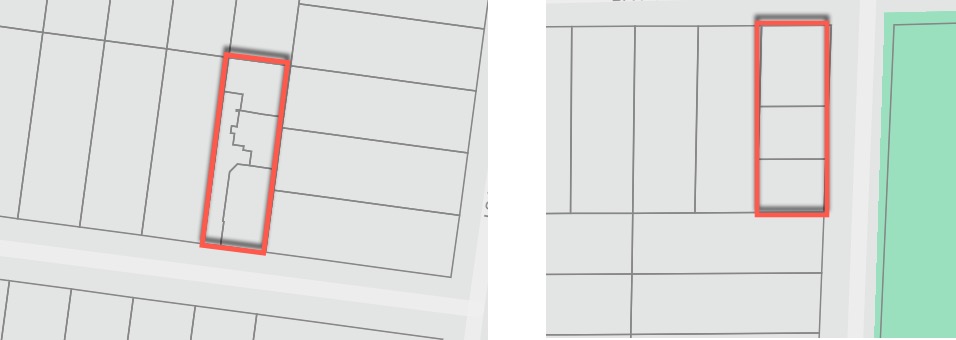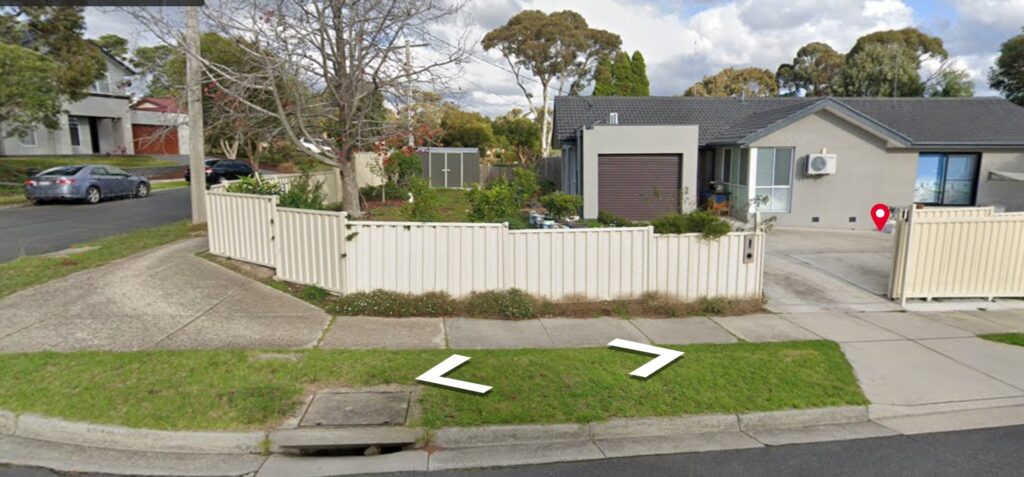I get asked this question a lot. In fact, one of my students asked me specifically how a corner site compared to a regular site when we were conducting comparable sales analysis in class.
The answer is… it depends.
A corner site has it’s challenges, but it has pro’s too. It all depends on the size of the site and the best and highest use.
If the site can be subdivided, (and in particular, if town planning allows multiple cross-overs), a developer can potentially create a subdivision without the need for shared land. Often, but not always, this means that the development does not have a need for a registered owners corporation. Each block can be a ‘stand alone’ block. This example below highlights the value of a corner site when considering a 700sqm block in a location that is amenable to townhouse development.

In each of these two examples above, the inherent impact of the requirement for the driveway is illustrated.
The units in the left hand side example have land size measurements of 226sqm, 127sqm and 172sqm, respectively. This is contrasted to the block on the right hand side, 217sqm, 216sqm and 328sqm, respectively.
The driveway in the left hand example measures a whopping 171sqm; some 25% of the entire parent parcel.
Not only does the necessity of the driveway reduce the block sizes (and potentially the maximum number of units on the site), but it also introduces the need for a shared insurance policy and a registered Owner’s Corporation.
The resale value on a townhouse without an Owner’s Corporation is higher than one with shared land.
In addition, a developer/builder can often obtain planning approval for an application to subdivide a smaller sized block on a suitable corner site given they don’t have to account for a driveway.
But when it comes to subdivided land on a corner site, do I still apply a premium?
Absolutely not.
The downsides to a small allotment on a corner are numerous. To start with, such a site will often provide less privacy. The house is exposed, both front and side.
They are often noisy locations, particularly if the side road is a busier road.
The usable land on title often may have a corner chipped out of it where the pathway curves around the parcel, resulting in either less front yard, or a house that is positioned further back on the site. The latter can spell less backyard.
Corner unit sites are tough for on-street parking. Parking restrictions apply near corners, so any street parking efforts by the owner or their visitors are generally not directly out the front.

When a dwelling is doubling as a place of work or aiding signage for a business, a corner site obviously represents double exposure. In these rare cases, it could be argued that the corner site is advantageous.
If the block is not a unit site, yet it’s not subdivide-able either, is it less valuable or more valuable than an otherwise regular, non-corner block?
The land can be more valuable if the block have rear/side access. This means that land representing the driveway is not required, thus optimising the entire block for its best and highest use. Rear laneways hold even more value again, because the security and elimination of side traffic spells an even more harmonious property.
Corner sites can be great, but they can polarise potential future buyers too. Knowing your why is essential when it comes to targeting these properties.
Note: easements, overlays, covenants and other planning controls all need to be well-understood before deeming a corner site a viable option.
REGISTER TO OUR NEWSLETTER
INFORMATION
CONTACT US
1A/58 ANDERSON STREET,
YARRAVILLE VIC 3013
0422 638 362
03 7000 6026
CATE@CATEBAKOS.COM.AU
